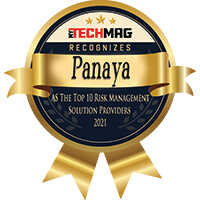Since 2020, most companies have faced numerous risks and disasters never seen before! Many risk managers have realized that it is time to adopt new strategies to deal with them.
Especially after the lingering effects of the COVID-19 pandemic, it’s the most crucial time to ask yourself, “What can we do to make our company more resilient?”
If you create awareness about anticipated risks, you can prepare your employees for anything that comes their way.
This post will discuss a few strategies you can apply to your company for risk management in 2022.
What is Risk Management?
If you need help predetermining the uncertainties in your company, risk management is the process you need! For this particular process, a team is designated. Their task is to identify all the possible risks that may occur. Along with this, they also have to come up with a solution to deal with them.
Risk management usually involves 4 main steps.
- Identifying the risk
- Evaluating the risk
- Controlling the risk
- Review audits
As technology evolves and companies shift to a digitalized mode, there are new and improved ways of performing the risk management procedure. Following tips will give you an insight into a few of the strategies you should follow to ensure maximum security for your business!
Top Risk Management Strategies
1. Ensuring Cyber Security
Even before the COVID-19 crisis, cyber security was an issue. However, if we fast-forward to now, it’s a more significant issue than ever. That is due to the fast evolvement of technology. The population of cybercriminals continues to grow, and they’re equipped with skills never seen before.
Before anything else, you should make sure everything you have digitalized is as secure as can be. Put passwords, hire a team to create a strong and secure database and whatnot.
After that, analyze every possible way your database can get hacked and your cyber security compromised. Come up with a plan to deal with these attacks so that if it ever occurs, you’ll be prepared in every possible way.
2. Aligning Yourself with Environmental Changes
We have all seen how the climate can impact companies and organizations worldwide. If you aim to protect your company and the Earth, it’s crucially vital for you to consider the climate and environmental changes occurring now and then. One cannot exist without the other.
Disasters due to climate change are among the top reasons for natural disasters damage, including hurricanes, tornados, floods, etc. These disasters are capable of completely destroying infrastructures and buildings. Some of them in the past years weren’t even adequately insured due to the high loss.
As time goes on, climate change will become harsher. It’s essential for companies to learn how to adapt to these changes and abide by the rules and regulations set by the government. Assess all the possible environmental risks your company might face and how to deal with them.
3. Dealing with Resignations
Ever since we entered the post-pandemic phase, there has been a massive shift in the job field. Most people often had to travel far to get to their job area. However, after experiencing remote working, many individuals’ opinions changed.
Some have decided to opt for hybrid work. But the companies that still require their employees to work in person might find themselves struggling in the near future. There is no need for anyone to look at jobs locally when you can find better opportunities worldwide!
That is why organizations need to present their opportunities and offers in such an appealing way that no employee will think about resigning.
Attrition is a substantial problem that companies face and will continue to face in the coming days. It’s because people are presented with much better offers within minutes.
For this, HR departments need to focus specifically on hiring and the value of existing employees. The risk management team should look closely at the labor turnover rate and report to the HR team. It should then be their job to take action accordingly. Some of these actions can be:
- Make employees feel included in the organization.
- Instead of hiring externally, focus on instilling skills in your current employees to avoid their resignations.
- Clear communication with employees can go a long way.
4. Maintain a Proper Database
Although there’s no confirmation that these trends will stick around, they can still have an everlasting impact on your business. It can make your organization more resilient than ever. However, you should ensure that you have a proper database for them to work effectively.
That is where all your assessment information will be stored. If you don’t keep this safe and secure, anything you do in the name of risk management won’t be helpful. You might be able to act upon your newly profound issue, but you won’t be able to monitor the risks continuously.
With a properly maintained database, you can continue to improve rather than going a step backward. That is because if you don’t have any information in front of you, you’re basically doing everything blindly. However, considering the pre-existing information can help you take more thoughtful actions, benefiting the company massively.
Also read: Top Security and Risk Management Trends to Consider for Enhanced Safety and Resilience
Final Words
As we dive into 2022, the risks continue to evolve rapidly. The first step all companies should take is to be aware of the most recent trends in risk management.
It’s nearly impossible to apply the risk management strategies that came onto the surface 3 years ago because there will be a lot of factors that won’t be accounted for.







